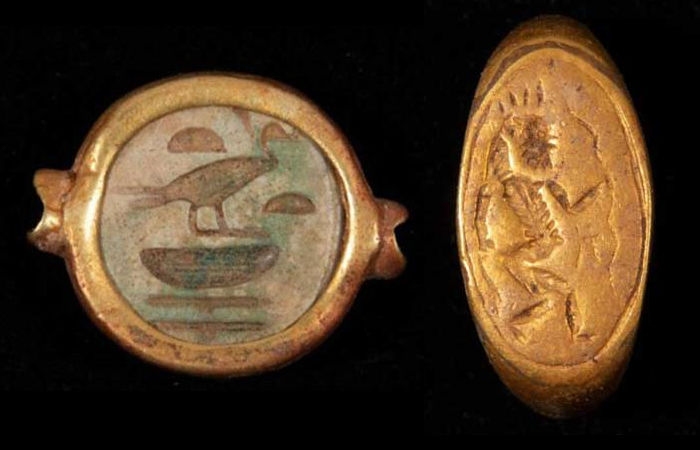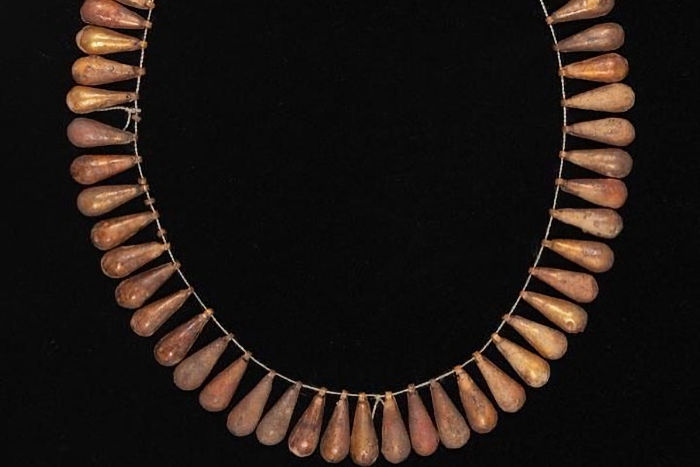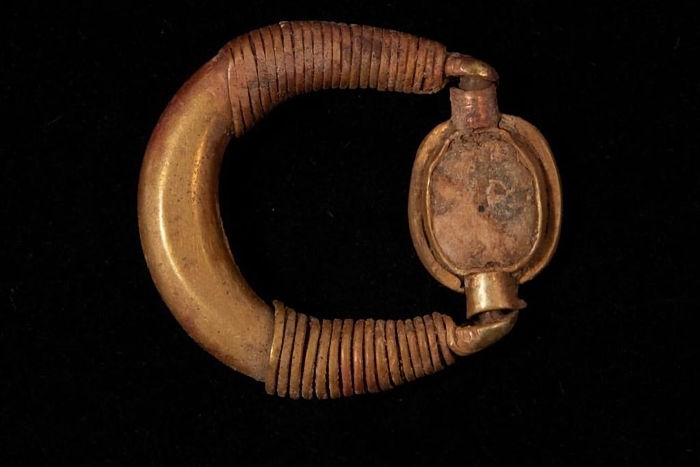Jan Bartek- AncientPages.com – Archaeologists excavating at Tell El-Amarna necropolis in Minya governorate in Upper Egypt have unearthed a burial containing magnificent ancient jewelry.
The English Egyptian archaeological mission of Cambridge University has been working in the Northern General Front since 2010 to study the social and economic condition of the residents of Tel Amarna, the capital of Egypt, during the reign of King Akhenaton (fourth), and common diseases during this period.

Image credit: Ministry of Tourism and Antiquities
The newly found artifacts consist of a small collection of gold and steaтιтe (soapstone) jewelry dating back to the 18th Dynasty (1550 to 1292 B.C).
The jewelry had originated from the interment of a young adult female, who was buried wearing a necklace of petal-shaped pendants and three finger rings, Mostafa Waziri, secretary general of the Supreme Council of Antiquities explained.
“She had been wrapped in textile and plant-fibre matting and interred in a small shaft-and-chamber tomb, along with several other individuals.
Ana Steven, deputy director of the mission, said that her burial is located at the Amarna North Desert Cemetery in the low desert west of the North Tombs. It includes a small number of burial shafts and tombs, as well as pit graves.

Image credit: Ministry of Tourism and Antiquities
The Amarna Project has been investigating the cemeteries of Amarna since 2005, with the aim of exploring life experiences and burial customs at the ancient city of Akhetaten,” Ahram Online reports.
The ancient Egyptian city of Amarna continues to transform our understanding of how human society has developed. Not only was it home to the monotheistic King Akhenaten, his wife Neferтιтi and the young Tutankhamun, but it also remains one of the world’s pre-eminent archaeological sites for understanding how people lived in the pre-Classical world.

Image credit: Ministry of Tourism and Antiquities
The Cambridge University mission started excavations in Tel El-Amarna in 1977 at several sites, including the grand Aten Temple, the Al-Ahgar village, the northern palace, and the Re and Banehsi houses, according to Director-General of Antiquities in Middle Egypt Gamal El-Semestawi.
The mission has also done restoration works at the Small Atun Temple and the northern palace.’
See also: More Archaeology News
Tel El-Amarna, located a few kilometers southwest of Minya city, holds the ruins of the city constructed by King Akhenaten and his wife Queen Neferтιтi to be the home of the cult of the sun god Aten.
The ruins of this great city include magnificent temples, palaces, and tombs.
Written by Jan Bartek – AncientPages.com Staff Writer





